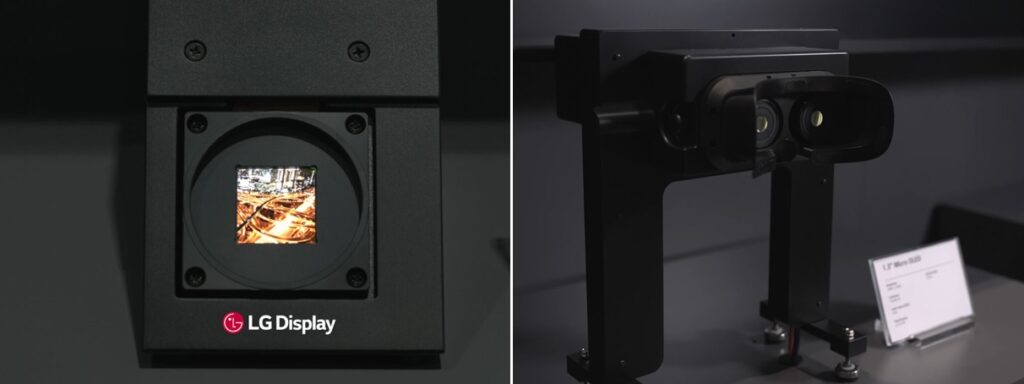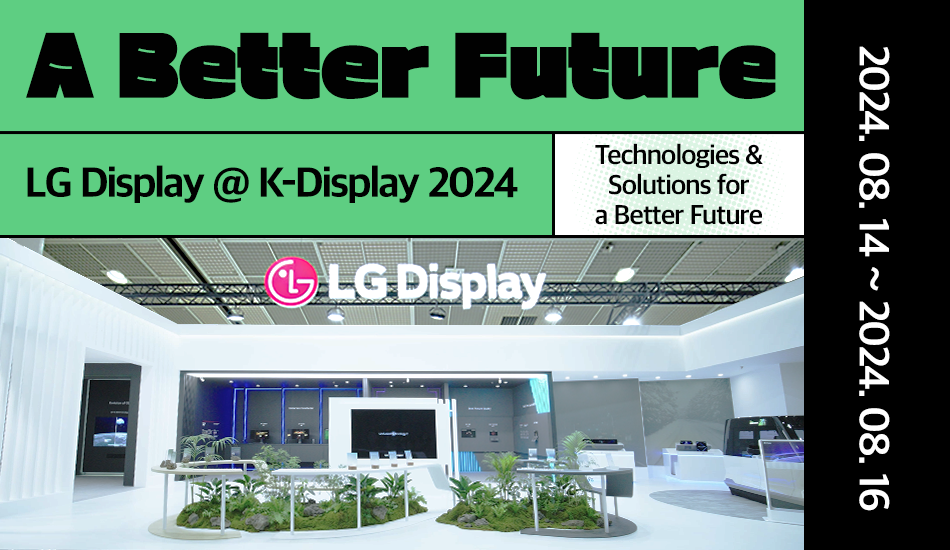By Alex Jensen
As we approach the halfway point of 2024, we are seeing some really interesting developments in the world of displays, from the popularity of the most advanced OLED TV panels to the mind-blowing virtual reality possibilities of OLEDoS.
So, looking back on the opening six months of the year, I’ve picked out some personal highlights.
Screens from extra-large…

Life moves so fast we sometimes forget how big and beautiful TV screens have become. With global shipments of TV panels this year on course to exceed 50 inches this year for the first time, as pointed out by this recent article, screen technology has also raced ahead.
The most advanced OLED TV panels now feature 42% brighter images than the conventional standard, stunning color accuracy, and wider viewing angles than any other TV screens on the market. These leaps were described as being “all thanks to LG Display’s 3rd Generation META 2.0 technology” when these new panels were first unveiled at CES 2024.
The buzz around META Technology 2.0 that began in Las Vegas only continued into San Jose for SID Display Week 2024 last month, when LG Display picked up a People’s Choice Award for an 83-inch panel equipped with META Technology 2.0.
It’s understandable that so much of the focus on third-generation OLED TV panels this year has been on their “dazzlingly bright heights, ” but I am just as interested in achieving that cutting-edge image quality across a large screen. For me personally, an 83-inch OLED TV with META Technology 2.0 would be perfect to enjoy sports with friends gathered in a room with various viewing angles – especially as we have special events this year from the Euro 2024 football championship to the Paris Olympics. Even if people everywhere seem to be glued to “shorts” on small screens, the best big screens still reign supreme when it comes to sports spectacles (and movies for that matter).
…to extra-small

If the industry’s been impressed by META Technology 2.0 raising an OLED TV to a brightness level of 3,000 nits, then it’s been truly astounded this year by the way LG Display has been “pushing the limits of OLED brightness and resolution” with a much smaller display – the size of a coin – achieving an incredible 10,000 nits! I’m referring to LG Display’s 1.3-inch OLEDoS for VR, which “seems designed to be as bright as the sun” while also boasting an ultra-high resolution of around 4,000 ppi.
The reason why factors like high brightness and resolution are so important for VR devices is they need to boost the user’s sense of immersion because when they are wearing a headset. Interestingly, OLEDoS for VR harnesses the tiny convex lenses to boost brightness – the same MLA technology found in the most advanced OLED TV panels.
OLEDoS for VR is yet to hit the market in the form a headset product, but for now we can say it also boasts outstanding color expression accuracy, could make VR look “smoother than ever,” and I get the distinct impression we have a gamechanger on our hands in terms of delivering hyper-realistic VR experiences – potentially going on to “open up a world of possibilities.” No doubt that is why this this display also picked up a People’s Choice Award at Display Week last month – as did OLEDoS for smartwatches, which produces holographic-like effects with the additional support of light field display technology.
The rise of Tandem OLED

Suddenly, it feels like Tandem OLED is everywhere this year, from laptops to tablets. In reality, this technology’s extensive presence in the IT sector has developed amid the expansion of its applications since 2019, when LG Display first introduced Tandem OLED in the form of automotive displays.
Based on the elegant idea of stacking two OLED layers, Tandem OLED multiplies OLED’s benefits to offer improved brightness, durability, and lifespan. I previously noted the role this technology has to play in “accelerating automotive displays,” which are increasingly being applied to vehicles dubbed “smartphones on wheels.”
While Tandem OLED for vehicles was once more on show at this year’s Display Week, its applications have widened not only because it “looks amazing” on IT devices but also because consumers tend to expect products like laptops and tablets to have longer lifespans than smartphones.
So, I find myself wondering just how much further Tandem OLED can go, as it seems “we can expect to see it in many more products moving forward.” Tandem OLED’s flexibility means it is also applicable to slidable and foldable devices, and we may just be witnessing the start of a special trend this year.
OLED for aircraft takes off

We’ve seen so much about OLED displays on trains and automobiles that we might overlook the role they have to play on planes! Well, overlook no more because a whole bunch of OLEDs for aircraft were on show at the Aircraft Interiors Expo (AIX) 2024 in Hamburg last month, as featured in more detail here just recently.
What LG Display demonstrated at AIX 2024, in conjunction with Boeing and LIG Nex1, were “aircraft-specific OLED panels, ensuring higher reliability and safety compared to regular OLED panels.” Their benefits over LCD panels also include being lighter, thus potentially boosting fuel efficiency.
Imagine being greeted by a 55-inch OLED panel at the entrance of an aircraft and then, once on board, enjoying the openness that Transparent OLED partitions provide. As noted by Boeing, “airlines can choose to do a number of things” once they have these displays at their disposal, from showing safety information to advertisements. I also like the idea of looking up at curved OLED screens wrapping across the ceiling to enjoy the impression of stargazing, for instance.
All this shows how far aircraft displays have evolved since those old days of watching a movie on a single screen placed at the front of the cabin. And although today we’re spoiled with a wide selection of entertainment, the resolution and viewing angle capabilities of screens on aircraft can still be rather lacking. So, it does feel like OLED displays could offer a premium solution to those issues, while also being a lot easier on the eyes – especially during dreaded red-eye flights – thanks to significantly lower blue light emissions and zero flicker.

Speaking of evolution, all of the OLED displays mentioned here are raising standards to new heights. It is therefore with great anticipation that we watch this space to see where we’re headed in the second half of 2024!








